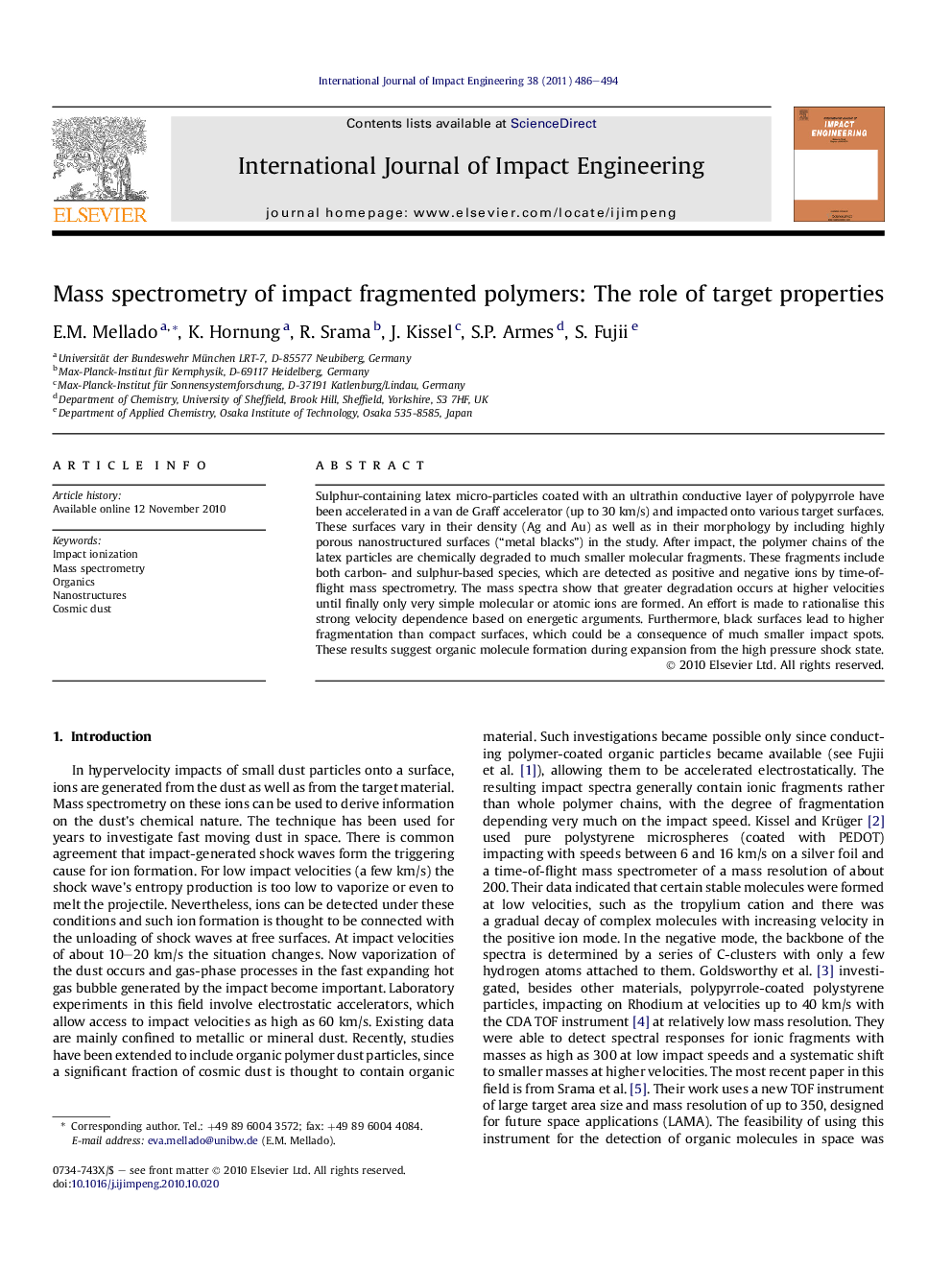| Article ID | Journal | Published Year | Pages | File Type |
|---|---|---|---|---|
| 778629 | International Journal of Impact Engineering | 2011 | 9 Pages |
Sulphur-containing latex micro-particles coated with an ultrathin conductive layer of polypyrrole have been accelerated in a van de Graff accelerator (up to 30 km/s) and impacted onto various target surfaces. These surfaces vary in their density (Ag and Au) as well as in their morphology by including highly porous nanostructured surfaces (“metal blacks”) in the study. After impact, the polymer chains of the latex particles are chemically degraded to much smaller molecular fragments. These fragments include both carbon- and sulphur-based species, which are detected as positive and negative ions by time-of-flight mass spectrometry. The mass spectra show that greater degradation occurs at higher velocities until finally only very simple molecular or atomic ions are formed. An effort is made to rationalise this strong velocity dependence based on energetic arguments. Furthermore, black surfaces lead to higher fragmentation than compact surfaces, which could be a consequence of much smaller impact spots. These results suggest organic molecule formation during expansion from the high pressure shock state.
